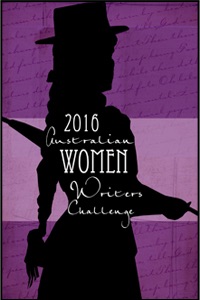
Intensely touching, deeply emotional, confronting and at times horrifying, Rosie Waterland recounts her troubled childhood, difficult teenage times and early adult years in The Anti-Cool Girl.
Raw, honest, brutal, her narration is conveyed with a sense of humour and self-awareness that prevents the story from becoming overwhelming. Without these touches of humour, the story would be too traumatic to read. Basically, Rosie’s life sucked; she has experienced the most shocking childhood that I’ve ever read about, and this is no novel – this is real life, so there’s no switching off to those actions, to the pain that she suffered, the harrowing events that she endured, along with her sisters. But, it’s not all pain and agony, there are moments of joy, and her humour in retelling of some events shows her strength and courage in the face of such difficult circumstances.
There are some really great lines and insights into Australian culture and dating that made me laugh, such as:
“The wedding was a stunning piece of Aussie lower-class perfection… The reception was in a brightly lit hall on the side of a busy main road, so the ambience was obviously just gorgeous…”
There’s this gem describing a bad kissing experience:
“It was like a fat slug rolled around in mucous and was now trying to mate with my tongue… I had no idea that a tongue could be soft like an oyster and hard like a tampon at the same time… This guy needed help, and if I didn’t offer it to him, he might subject some poor other girl to his oyster tampon.”
Rosie and her sisters were often shuffled from family member to friend and back again due to her parents being addicts and her mother constantly searching for love, finding it briefly with a new man and then chaos would erupt destroying the relationship. The girls never had a stable home.
“We stayed with an uncle for a while. We stayed with our birth grandma for a while… But nobody seemed to want to keep us. Whatever test you needed to pass to be a kid that adults wanted around, we were just not passing it. We were told that all three of us might be split up – that three girls together was too much of a commitment for most carers.”
At one point Rosie and her sisters are put into foster care and are molested repeatedly by their very wealthy foster father, over the course of a year. The man in question sexually molested several foster children, after Rosie left, and despite complaints being made he has never been formally charged. There are obviously serious flaws in the screening process and the system if sexual predators can be awarded foster parent status, especially if their wealth somehow plays a part in them being perceived as better than others or more charitable. Rosie’s story highlights that flaws in the public health system and the foster system make already vulnerable people even more vulnerable to abuse and neglect.
Something that really stood out for me was how the public health system and the foster system failed Rosie and her sisters, and most certainly other families like them. Her mother is bipolar but never received treatment; her father was diagnosed with schizophrenia but never received treatment. The lack of understanding of mental illness and the stigma attached to mental illness meant that Rosie’s parents lived traumatised lives themselves, and by never being treated they inadvertently went on to severely damage the lives of their children. Her parents were also addicts, which complicated and amplified their behaviour issues.
Deeply intense and dark in sections, The Anti-Cool Girl is also about hope, about having dreams, and about finding yourself and believing in yourself despite having been to the darkest of places. Rosie always wanted to make people laugh, and even as a child she would write winning Oscar speeches. Those desires, that dream stayed with her, and she found her way to a second-rate drama school, and then went on to complete a degree in creative writing, and from there, combined with her love of watching TV, she accidentally stumbled into a writing role for an online women’s website. Through all of that she not only achieved her goal of making people laugh, but also of being one of the ‘cool’ people, only to realise that she didn’t want to be cool; she wanted to just be herself.
It is Rosie’s realisations and self-reflections that make this book such a powerful autobiography. She exposes herself completely, and it takes courage, bucket loads of courage, to talk so frankly and openly about your own life like that. She could have edited sections, kept some of the darker, unpleasant bits to herself, but she didn’t – she is upfront and totally honest, and that’s admirable and makes for potent reading. She tells all about her eating disorder, her nude acting role attempt, her enjoyment at sitting at home in her underpants drinking wine and watching TV, and her weird Tinder date with the guy who wanted her to get to know his ‘little me’ more intimately.
She talks intimately about her battle with obesity:
“Gaining ninety kilos was the experience that taught me to love myself. To really love my myself.”
And about what’s most important in life:
“I realised that as soon as you stop listening to what everyone else wants from you, and start listening to what you want from you, your life will get easier.”
Ultimately, hers is a story of courage, of facing her pain so that she could then begin to heal. Profoundly touching, The Anti-Cool Girl certainly puts life into sharp perspective.
Rating: 5/5
The Anti-Cool Girl by Rosie Waterland (Fourth Estate 2015)
ebook ISBN: 9781460705223
Want to know more about Rosie Waterland? Then check out Rosie’s FB page.








